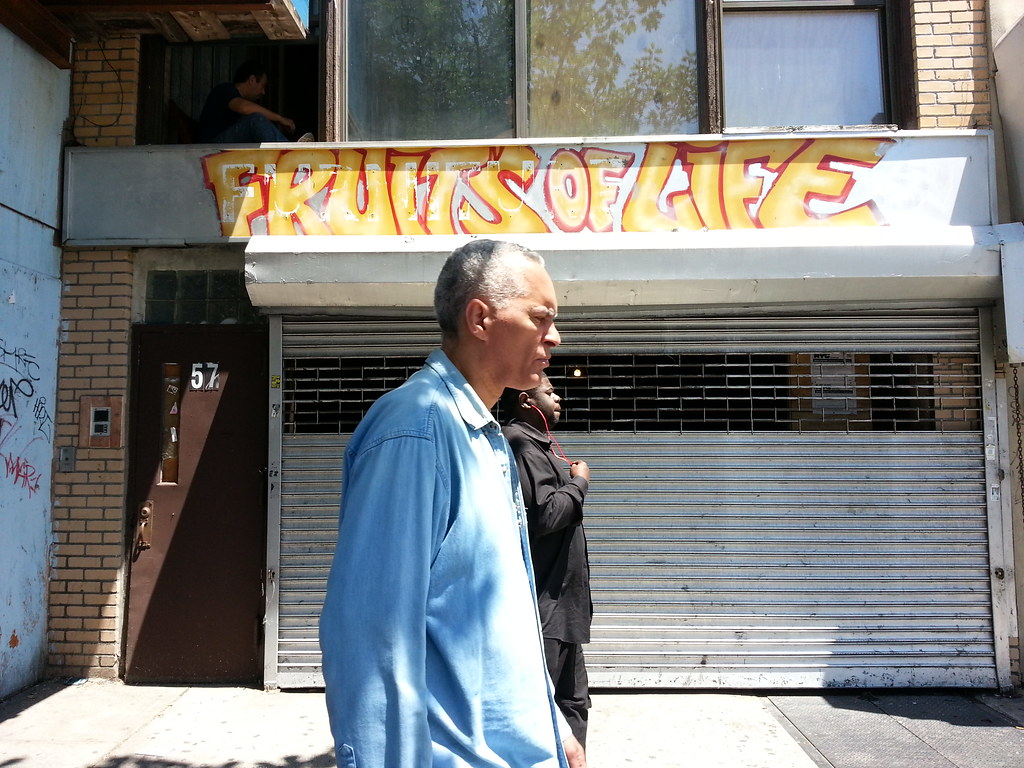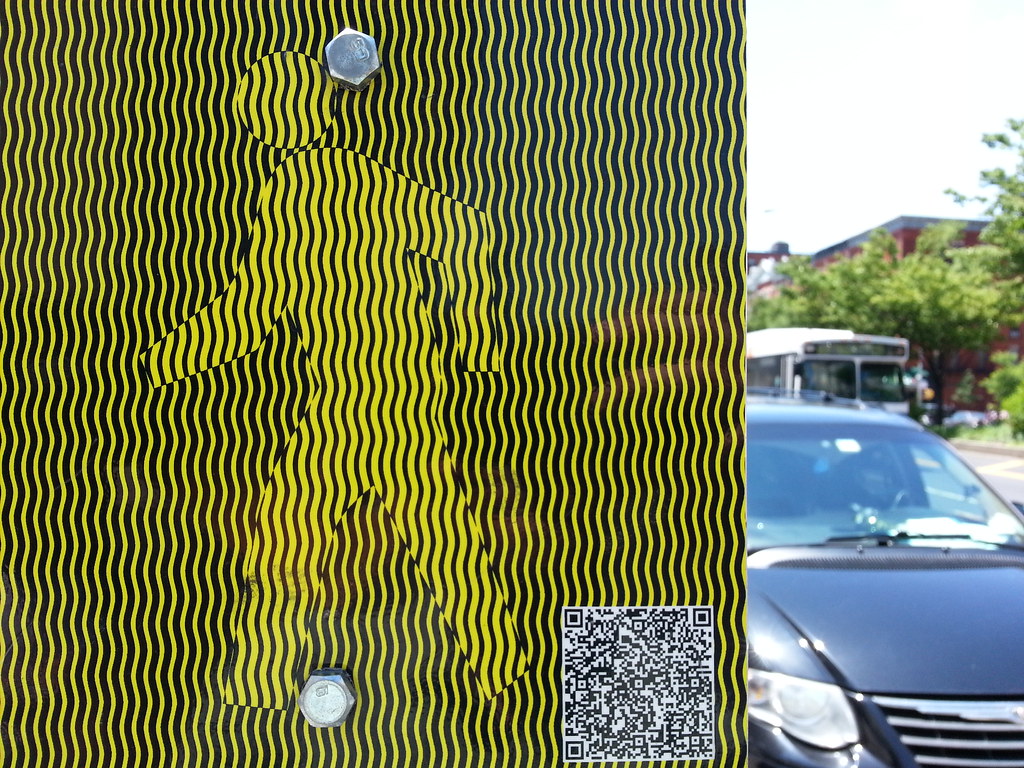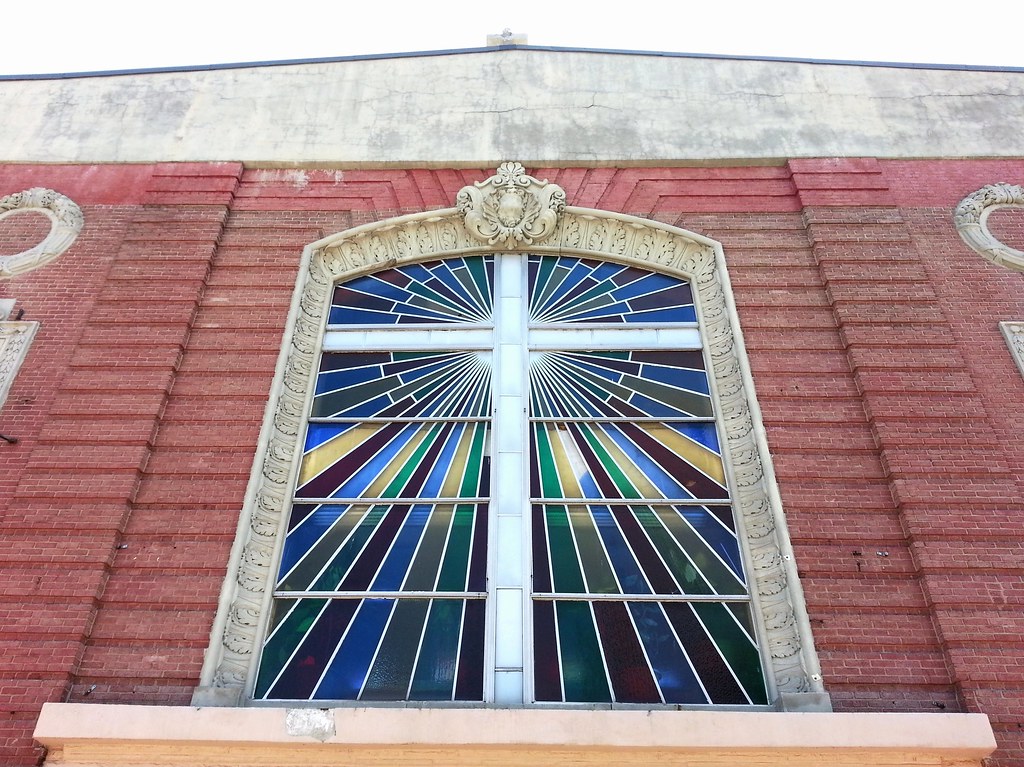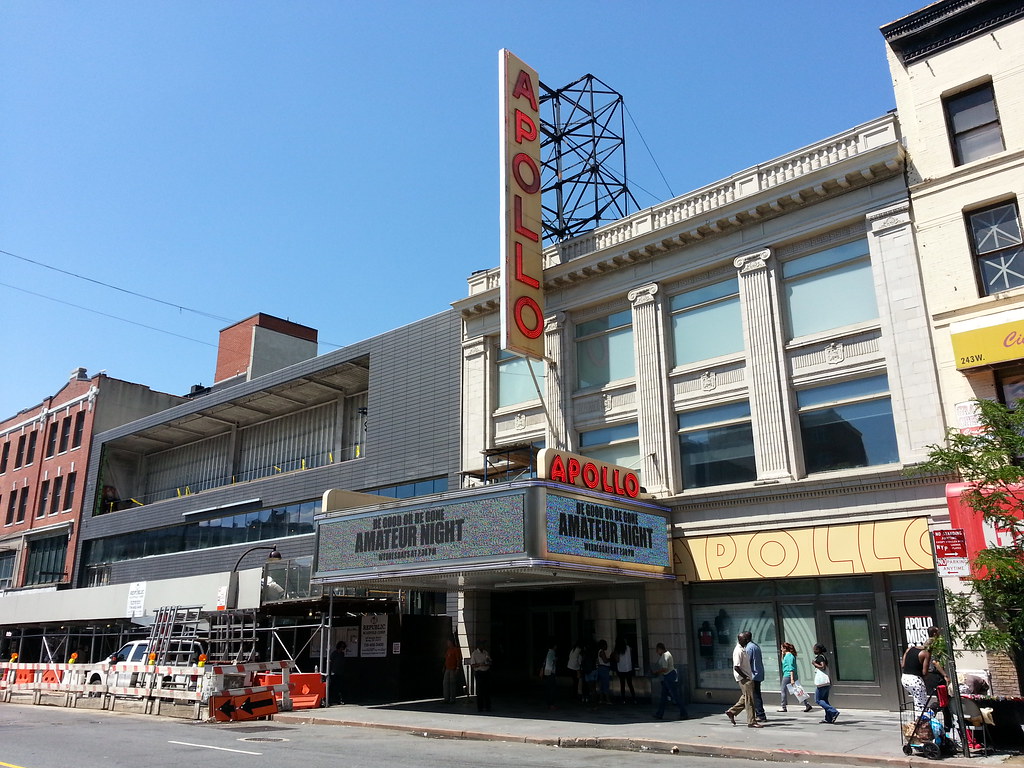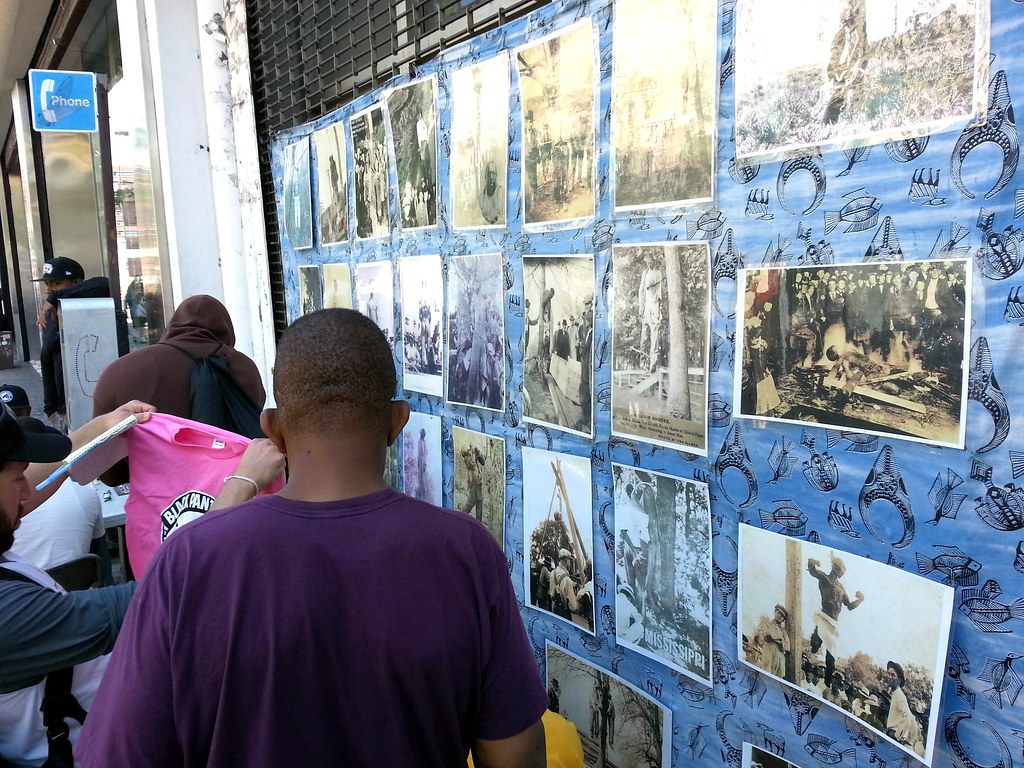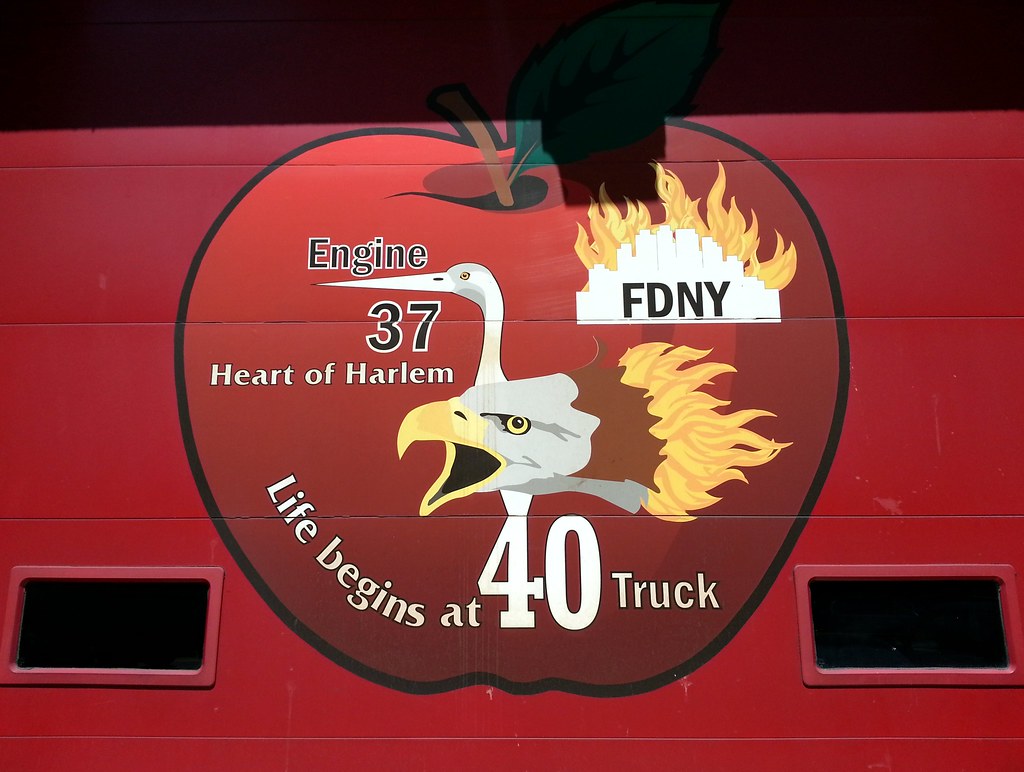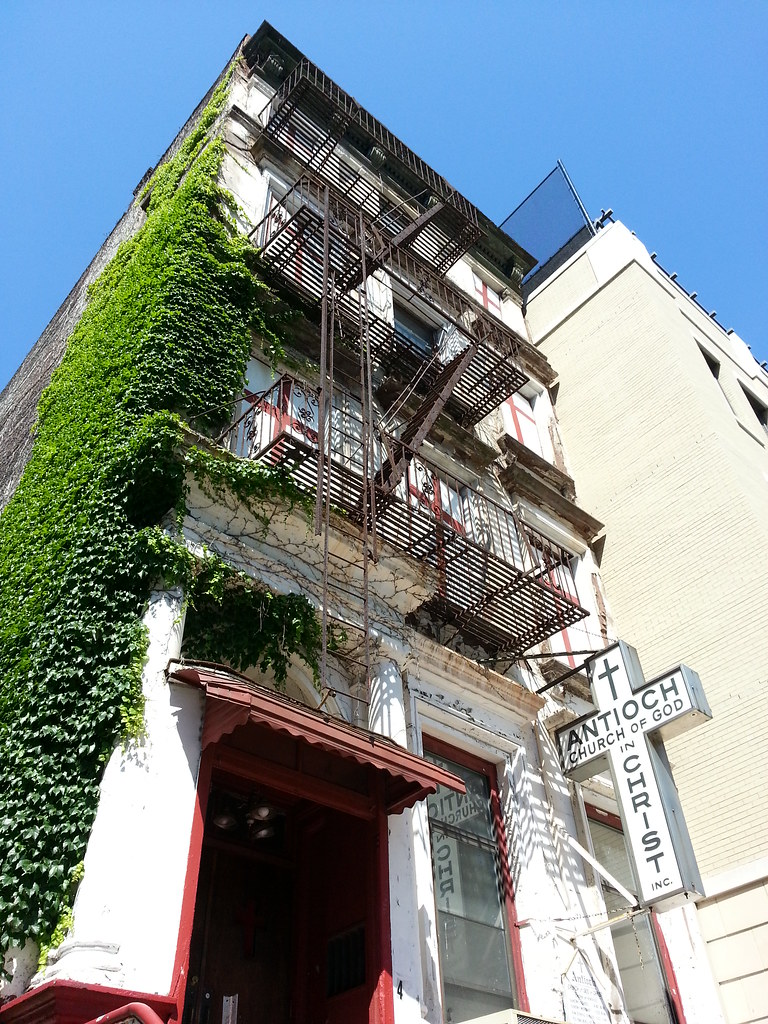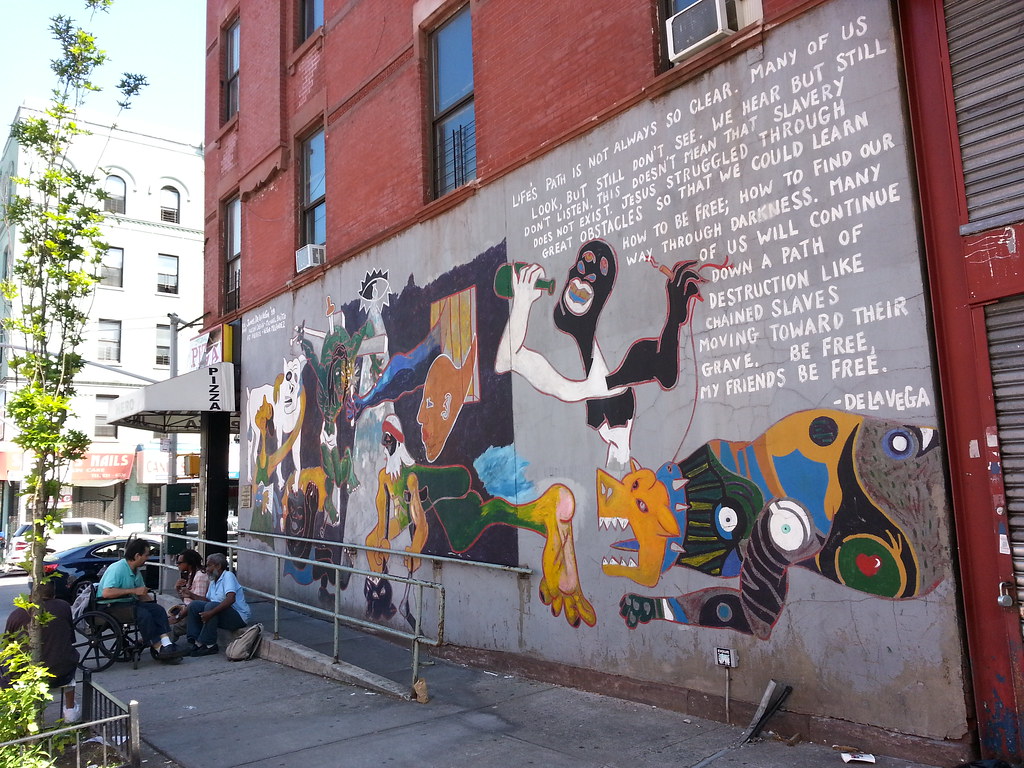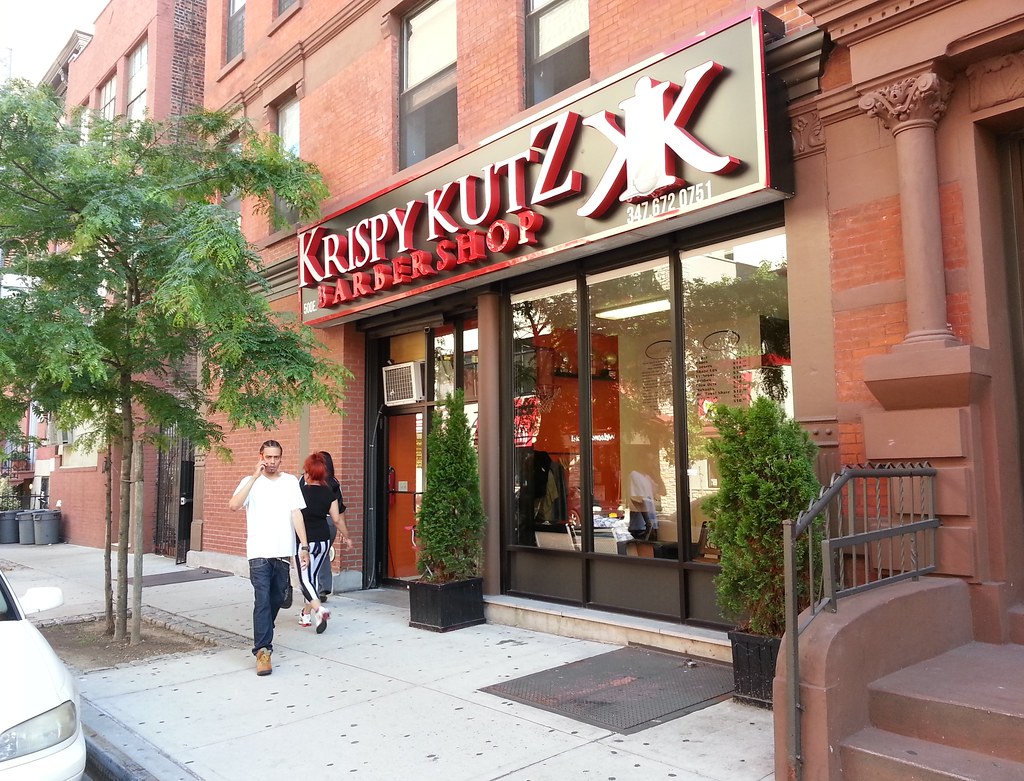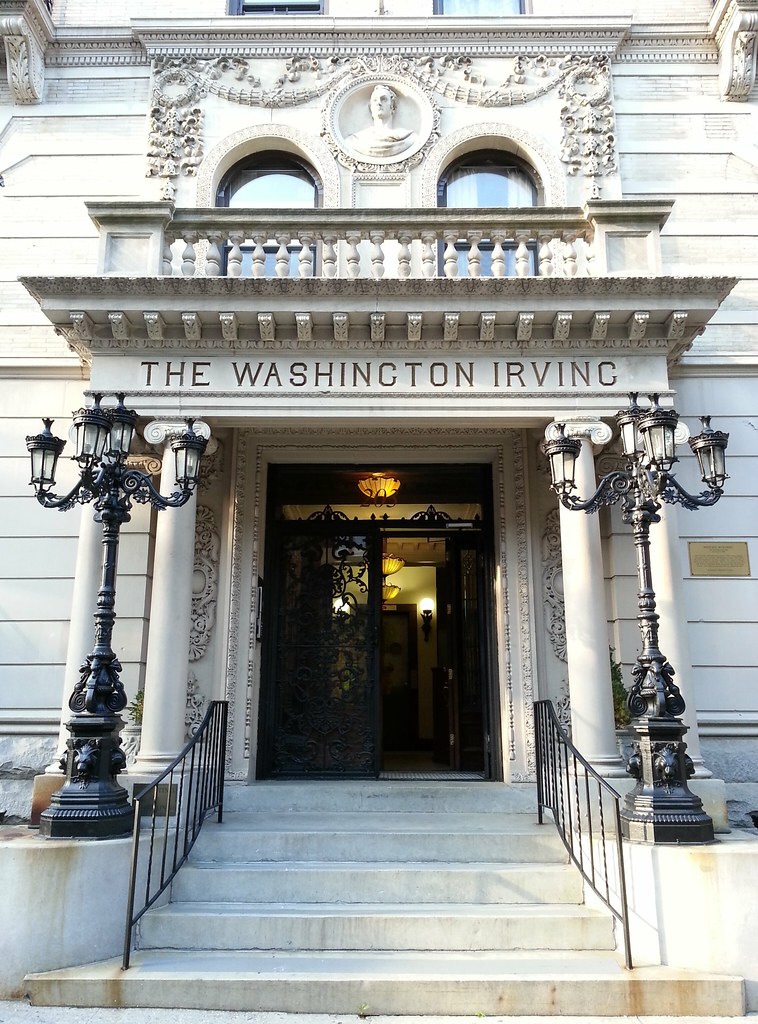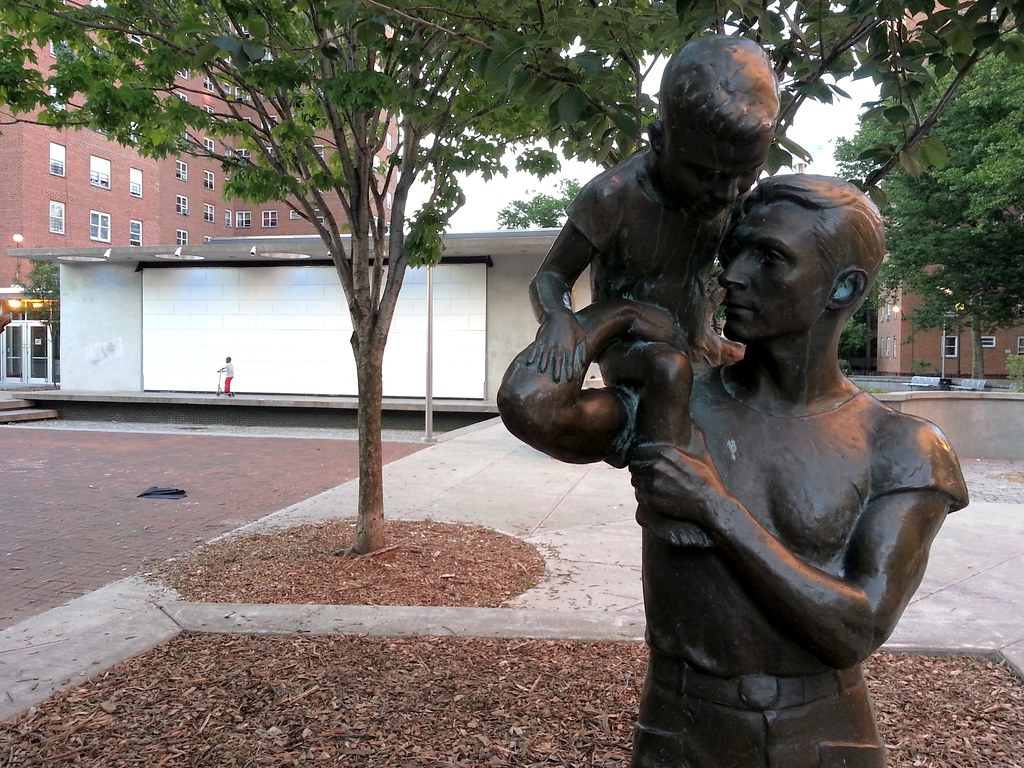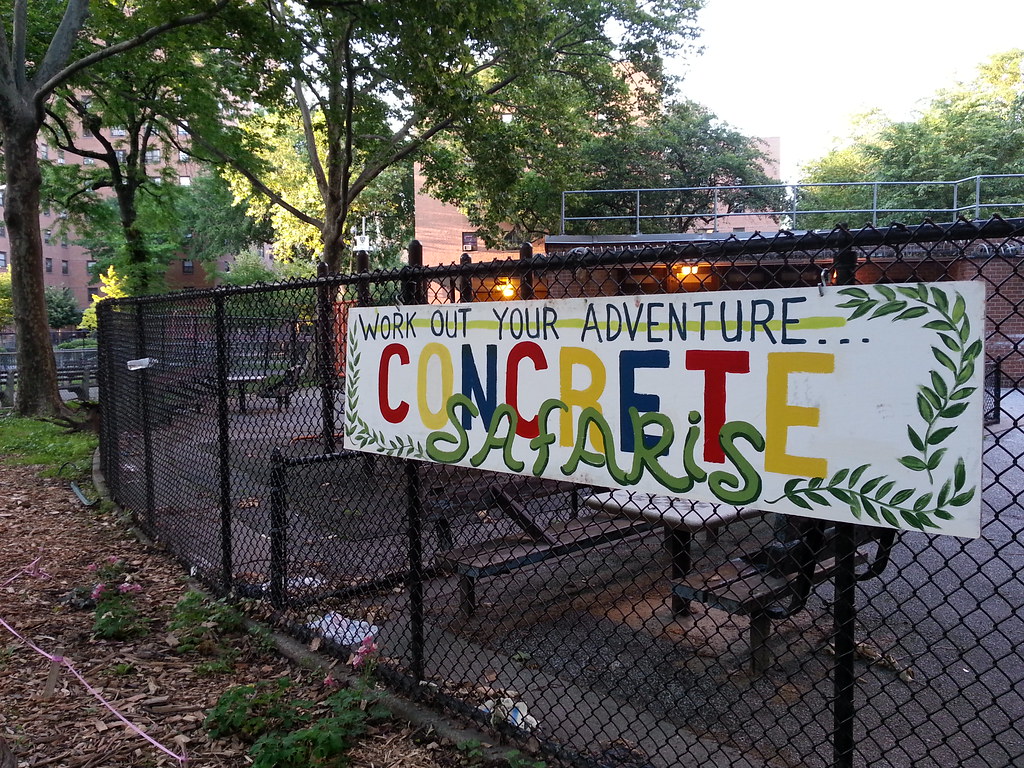
Imagine a worldYou can learn more about the project and see all the different haikus here.
Where your every move matters.
Welcome to that world.
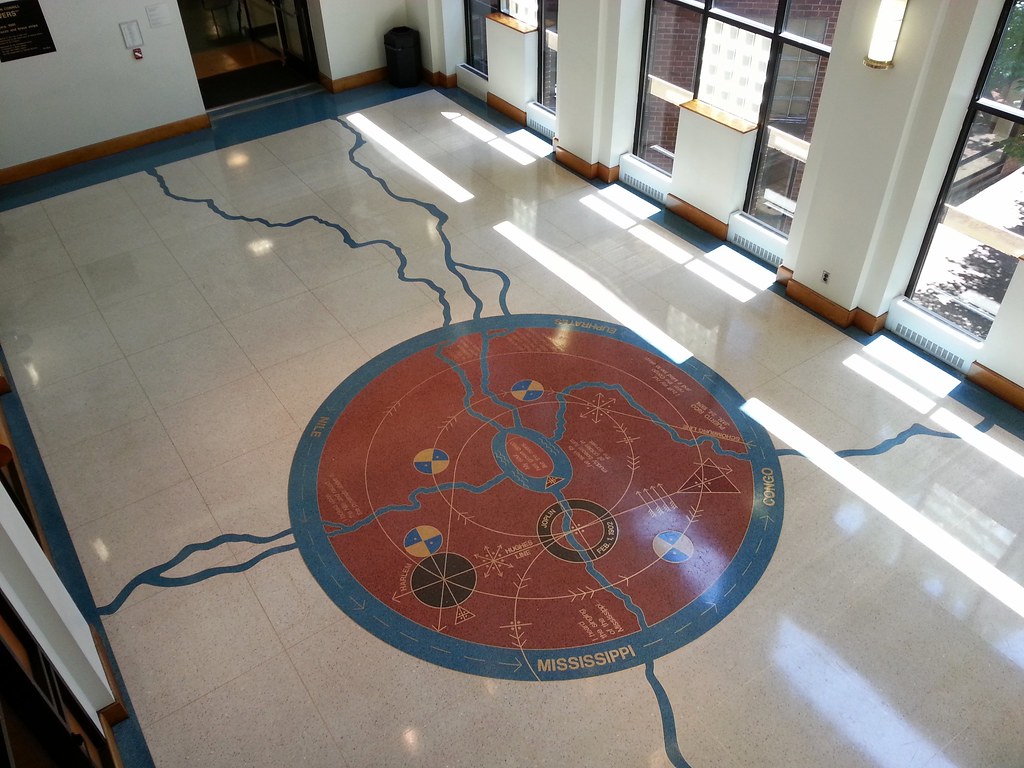
Here at the Schomburg Center for Research in Black Culture, the ashes of Langston Hughes are interred beneath this cosmogram inscribed with lines from Hughes's "The Negro Speaks of Rivers".
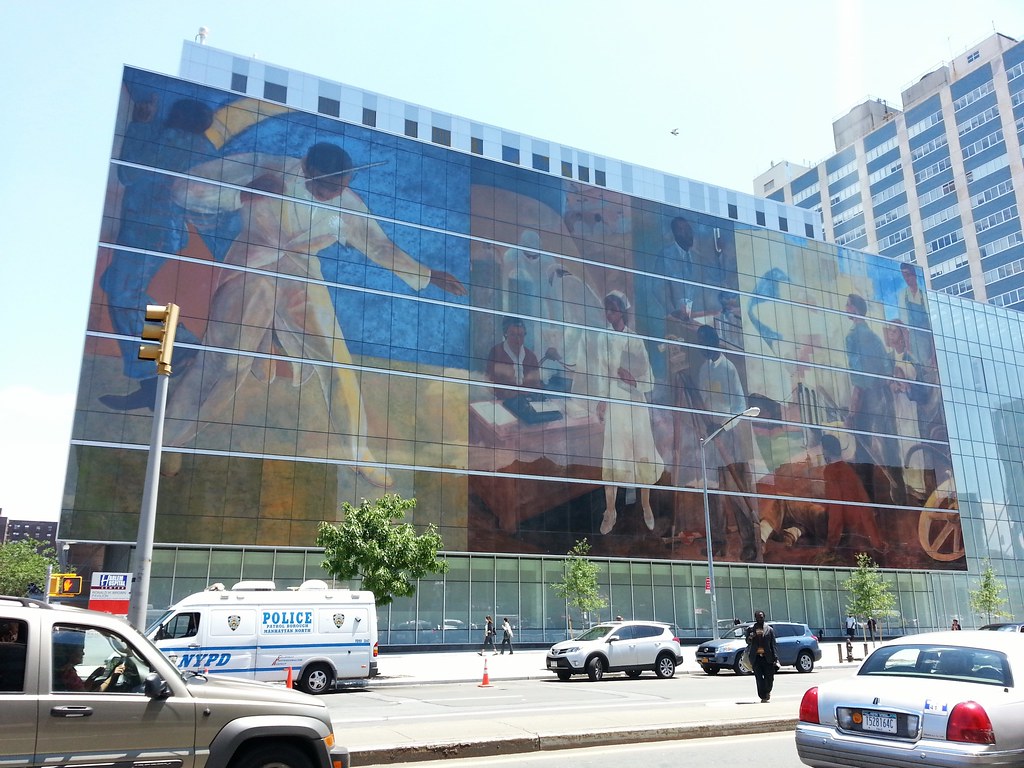
The facade of the new patient pavilion at Harlem Hospital features digitally enlarged sections of one of the hospital's recently restored WPA murals. You can see the murals and read more about them here.
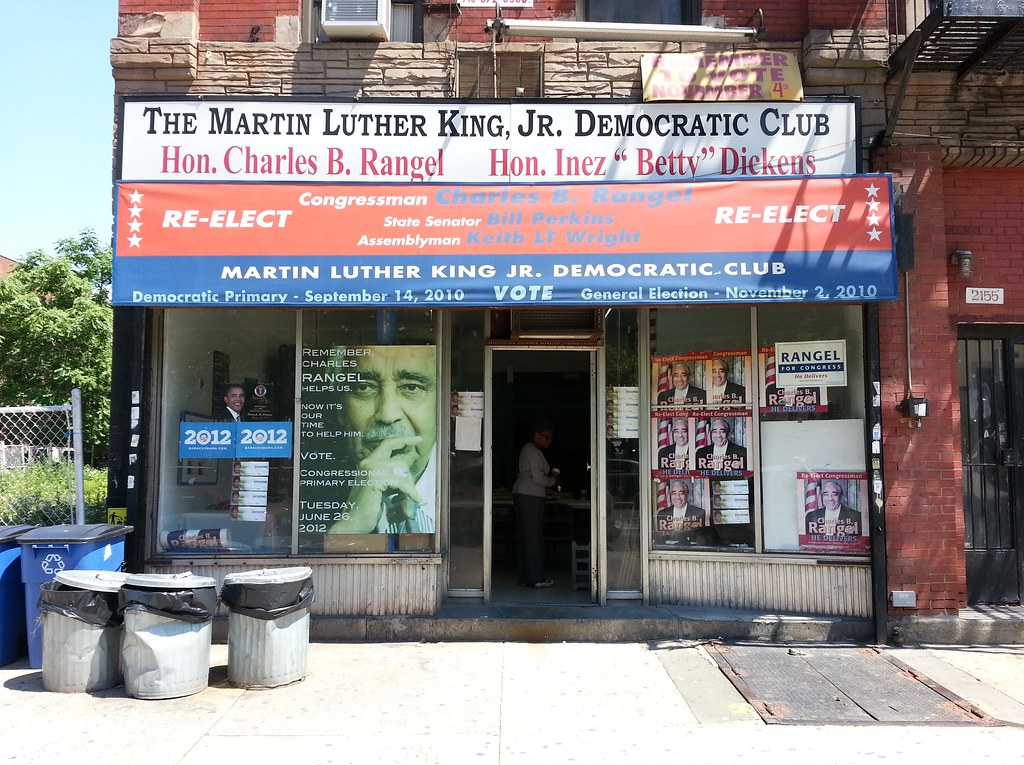
As if you couldn't tell, this is the home club of Charlie Rangel, the third-longest-serving current member of Congress (tied with Bill Young) and the latest of the 23 representatives to be censured in the 224-year history of the House.
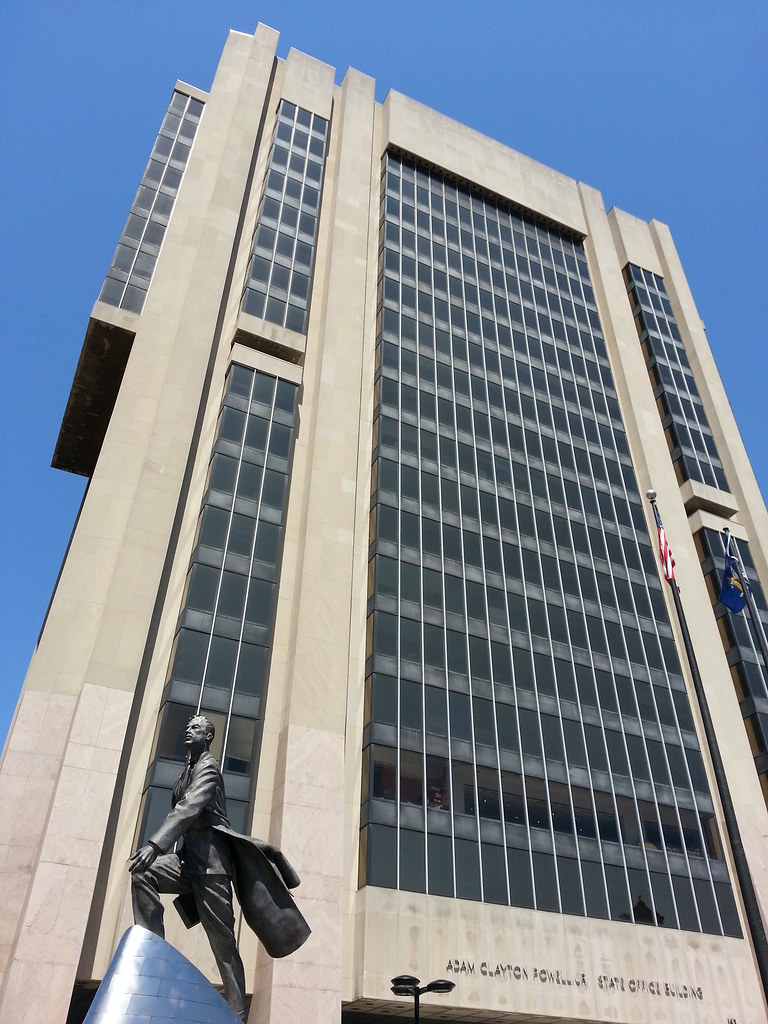
The tallest building in Harlem is named for New York's first African-American congressman, who achieved prominence as "the major black legislator of his era". Powell's late-career legal and ethical problems played out similarly to those of his successor, Charlie Rangel, who defeated him in the 1970 Democratic primary (and whose political club we saw in the last picture).

I'm not sure what this building on 124th Street was originally, but the fading painted sign at the far end reads "Kress 5-10-25 Cent Store", identifying that section, I believe, as the back entrance of the old Kress store that fronted on 125th Street and that was the scene of the attempted shoplifting incident that set off the Harlem race riots of 1935.

by Pedro Villalta and Montserrat Daubón. You can see photos of the sculpture being installed here.
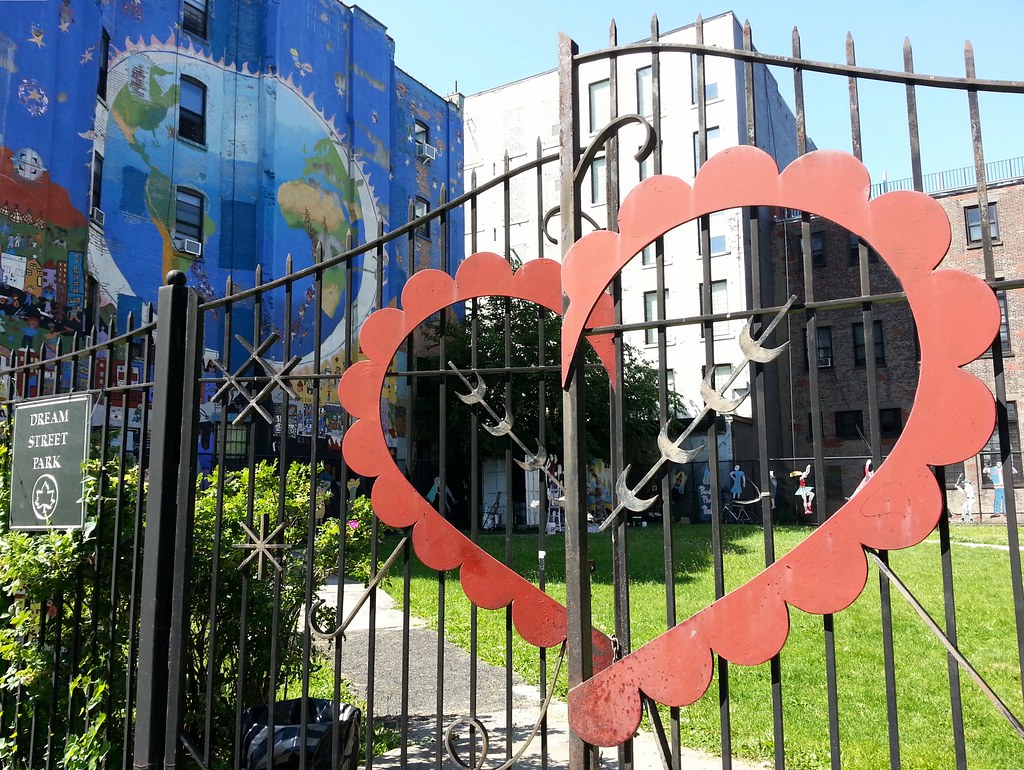
"When 60 homeless children living in city shelters and welfare hotels created Dream Street Park out of a rat-infested lot on 124th Street and Lexington Avenue in 1989, they painted a large mural depicting their view of a perfect city."
The park was later relocated a block east to this spot (where an aerial view reveals a geometrical echo of the heart adorning the entrance gate) to make way for the construction of a Pathmark superstore, and another group of mostly homeless kids painted a new mural, which you can see in more detail here.
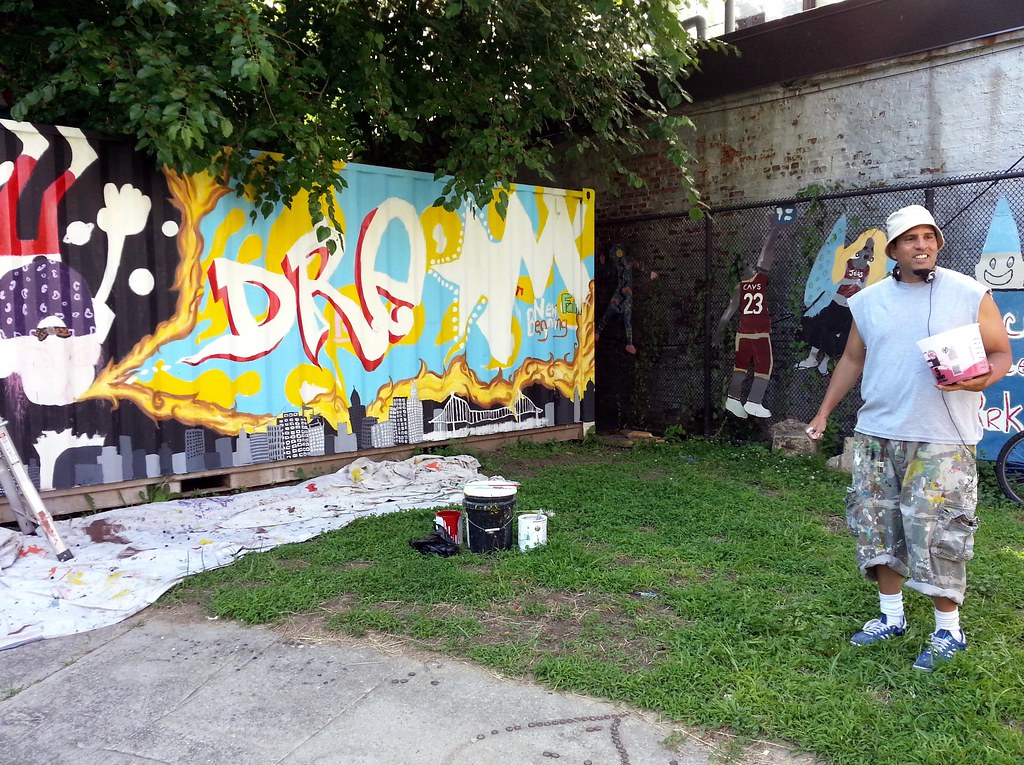
The creator of this piece is painting a new mural in Dream Street Park.
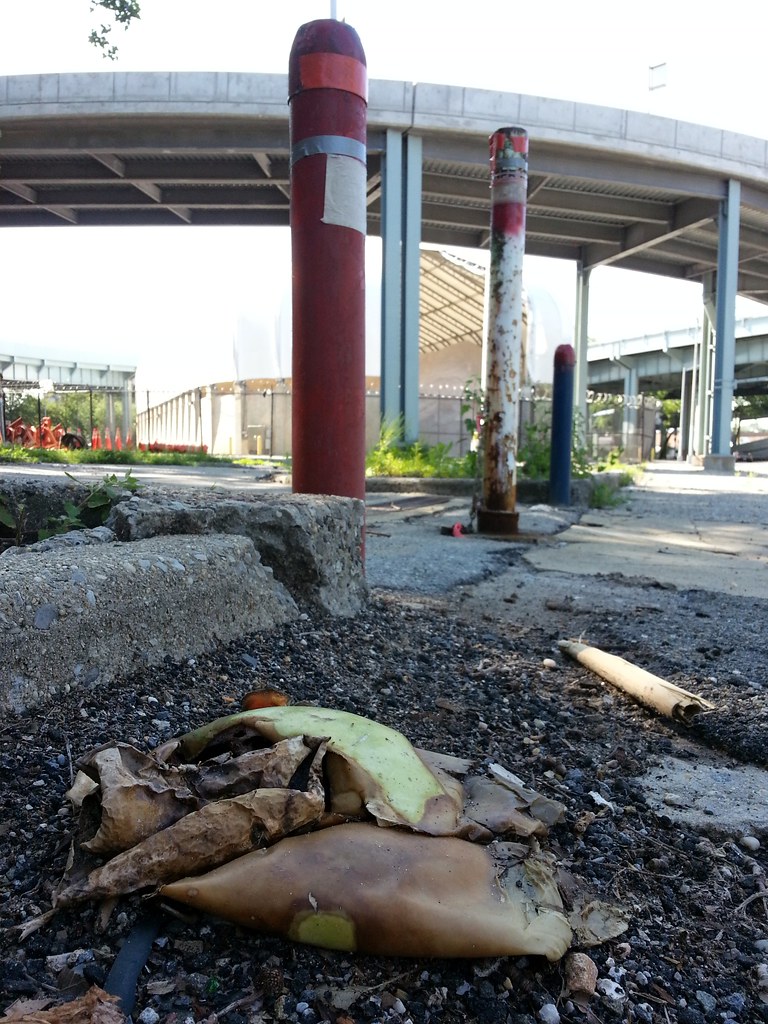
A few years ago, while heading south on the FDR Drive, I spotted a handwritten sign bearing the name "Otis Houston Jr." along with instructions to "Goggle ME".
When Goggled, Mr. Houston reveals himself to be a fascinating character. Here are some excerpts from a 2003 NY Times article about his performance art:
The other day in Harlem, Otis Houston Jr. sat near the southbound lanes of the Franklin D. Roosevelt Drive with a white metal bird cage on his head, one hand gripping a plastic steering wheel, the other holding a Cuban cigar case. A ballpoint pen was perched in his lips like a cigarette. Morning commuters were rushing by. . . .The Times wrote him up again last year on the occasion of a short documentary about him being completed.
By dressing like an athletic firefighter or standing near the highway with a bunch of ripe bananas on his head, Mr. Houston has tried, in his own arcane way, to impart a lesson about good health to the city's commuters. . . .
He is now exploring the dangers of smoking -- thus the Cuban cigar and ballpoint pen. He also keeps a pair of exercise bicycles fetched up against the wall of a nearby overpass, and drivers are frequently treated to the sight of him with his head bowed and his legs pumping. . . .
This year alone, he says, he has walked around the island of Manhattan a half-dozen times. He plans to do it a half-dozen more. . . .
He is a spry, fit man with a habit of talking in unstoppable monologues and a laugh so hearty that he often has to walk in circles until it peters out and dies.
I've yet to meet the man in person, but I imagine the rotting watermelon above is his doing. He's typically out here by the Triborough Bridge interchange in the morning, so I'll make sure to drop by earlier in the day next time I'm in the area.
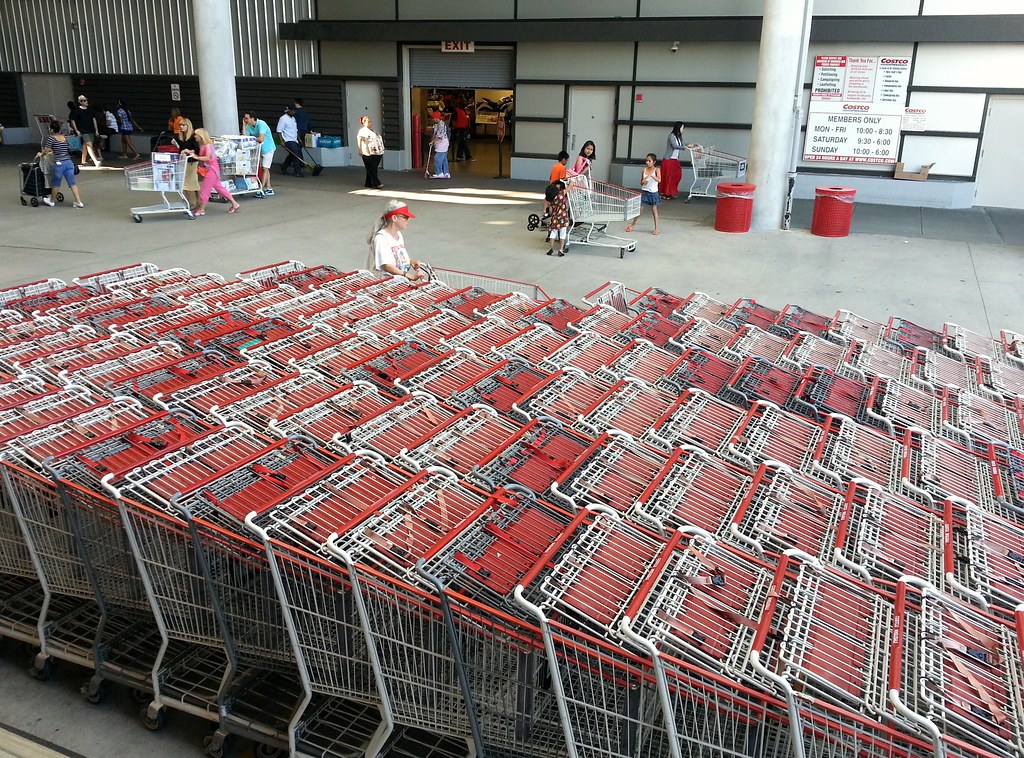
Sitting on the former site of the massive Washburn Wire factory in East Harlem, this strikingly out-of-place big-box shopping center is tucked away off Pleasant Avenue, once an infamous Mafia stronghold that was home to characters like Fat Tony, Alfred Ears, Gary High-Eye, Vinnie Head, Frankie Nose, Danny Legs, Angelo Cheesecake, Johnny Roast Beef, Charlie Cream Cheese, Freddy Eggs, Tommy Salami, Joe Olive, Mary Knish, Jimmy the Cat, Vito the Bat, Johnny Fox, and Gary the Lamb.
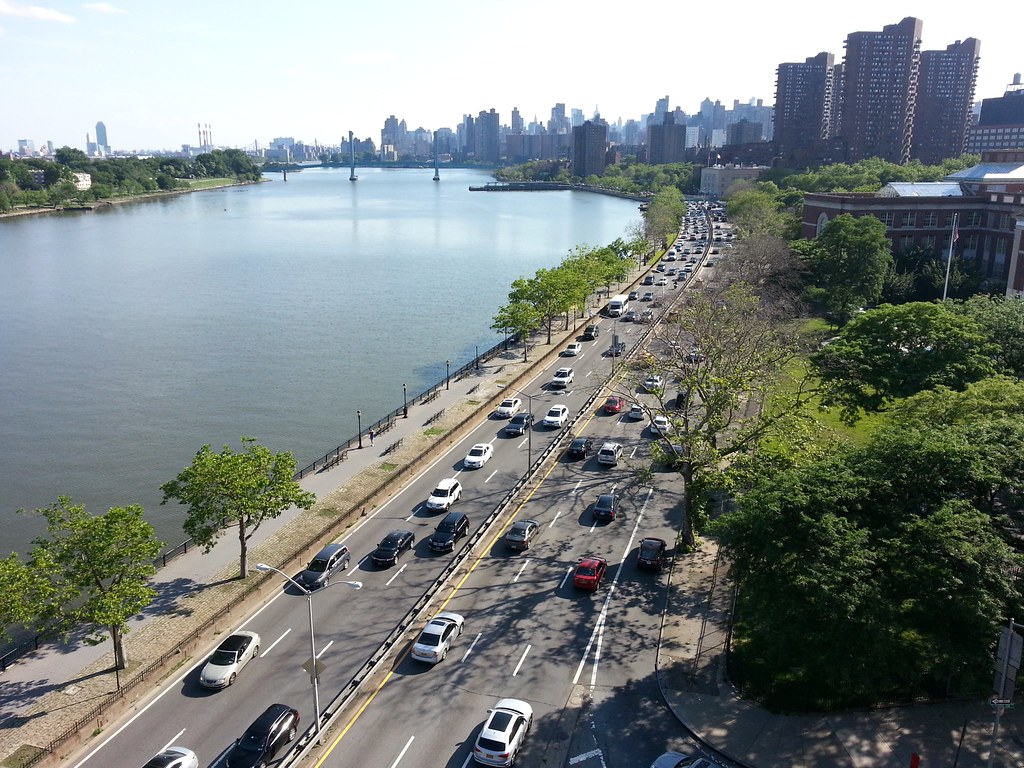
Welcome to the "Jim Runsdorf Overlook", a.k.a. the top of the enormous parking deck at East River Plaza. Given how few cars make their way up here (the garage was massively overbuilt), this would be a great spot for a picnic! The views of the Harlem River and the surrounding cityscape are gorgeous, and the noise from the truckless and busless FDR Drive is actually quite pleasant when you're several floors above the traffic — with your eyes closed, you can almost mistake it for the sound of flowing water.
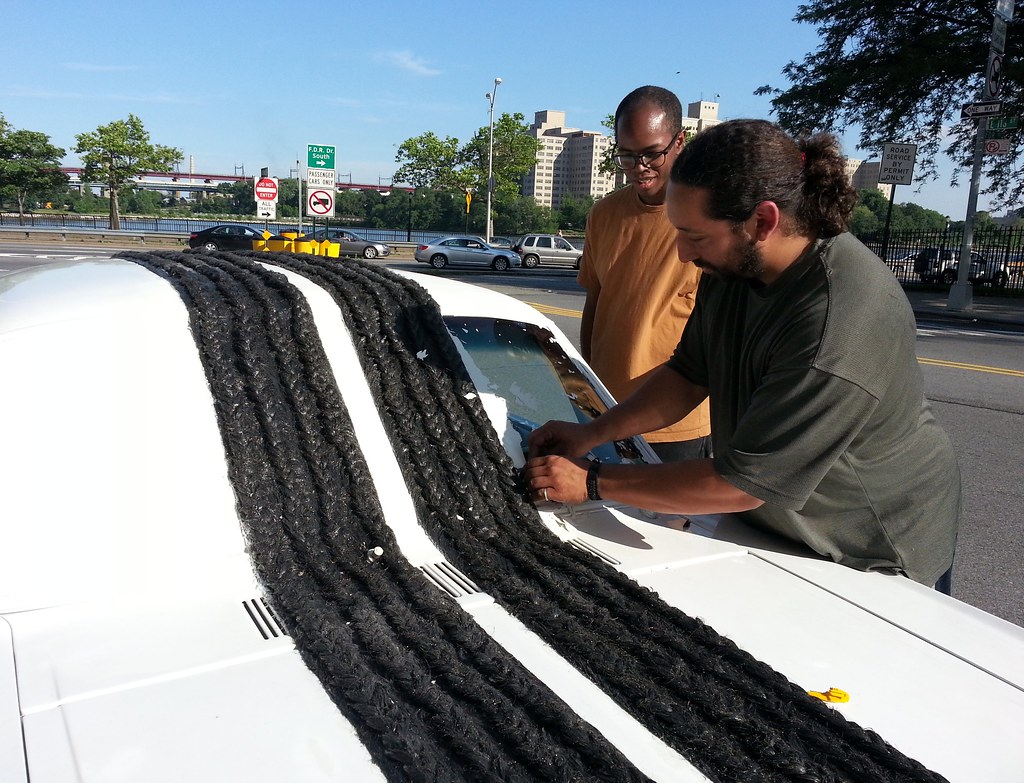
Standing outside the East River Plaza parking garage, Hugh Hayden looks on as Mike Tobey scrapes paint off the windshield of Hugh's cornrowed American Hero #4, beginning the car's transition back to life as a regular old Ford Mustang.
Brownstones occupy a unique place in the New York City psyche, as one of the city's most prototypical signposts, like yellow cabs and fast walkers, yet are able to stir aching desire and teeth-baring jealousy. Everybody wants one.
Thousands of these structures are crammed into the five boroughs, like sideways stacks of very expensive pancakes. As it turns out, most of them are not only cast from the same mold, but were also made from the same stone, a brown sandstone quarried in Portland, Conn.
After being mined on and off for centuries, the Portland Brownstone Quarries, the very last of a kind, closed down this year, and by the end of this month, the quarry's final scraps of inventory should be gone. . . .
Not everyone, however, is sad to say goodbye to this particular building block. That's because the stone, the object of so many New Yorkers' obsessions, is considered to be rather mediocre.
"I remember some quote saying it was the worst stone ever quarried," said Timothy Lynch, the executive director of the Buildings Department’s forensic unit. "It's like New York City is covered in cold chocolate."
That old-time brownstone hater was likely to be Edith Wharton, who called it the "most hideous" stone ever quarried.
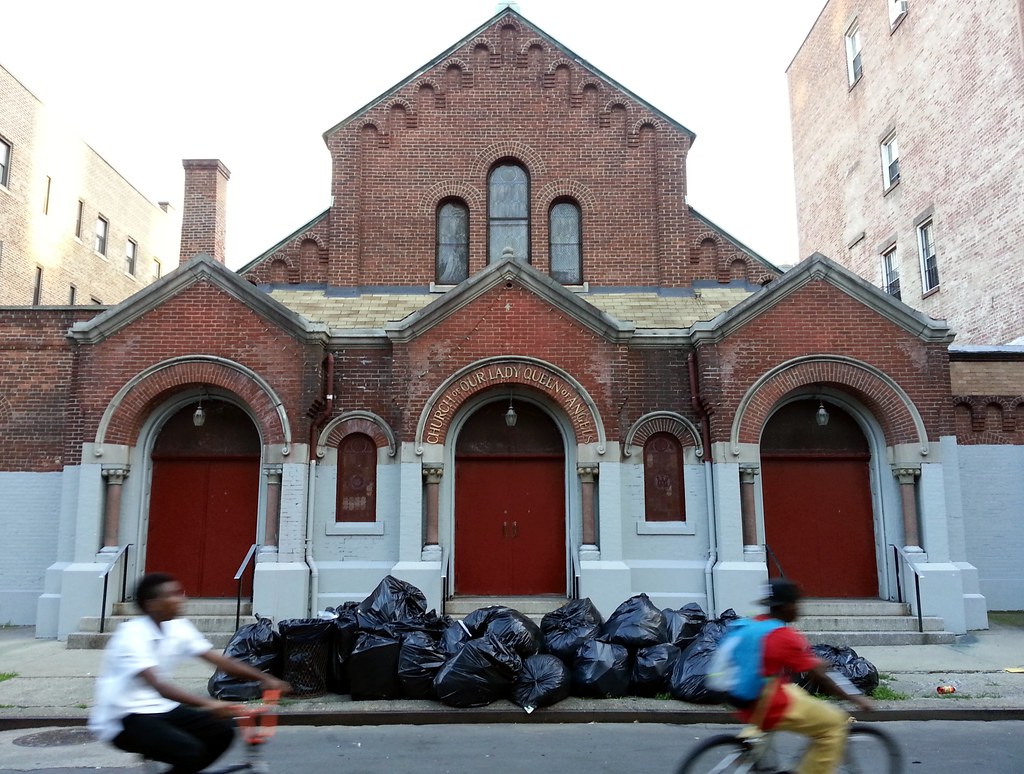
After the Archdiocese of New York closed this Catholic church (which is much more spacious than it looks from the outside) in early 2007, a number of parishioners decided to continue holding services here every Sunday, out on the sidewalk. What started as a protest developed into a genuine religious community. According to the most recent report I can find, the group was still meeting regularly at the end of last year, when they held a funeral for one of their leaders right here in front of the church.
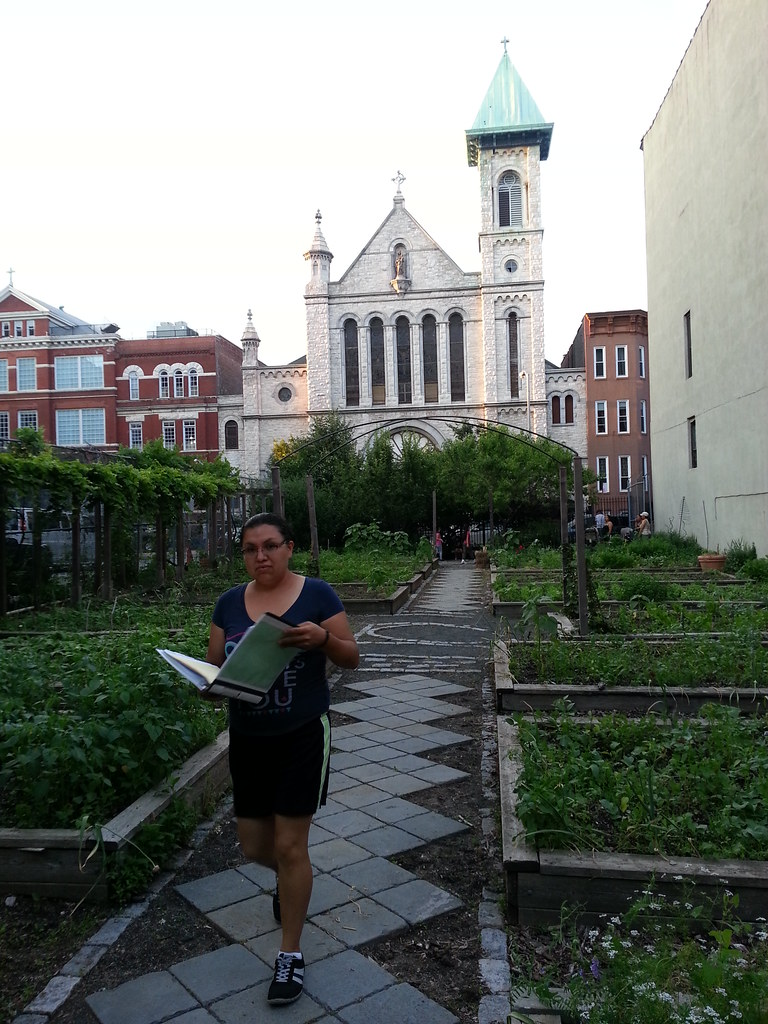
This church (as seen from the Rodale Pleasant Park Community Garden) is one of the last reminders* of the almost vanished community of Italian Harlem. While the number of Italian worshipers at the church has dwindled considerably, and the annual feast of Our Lady of Mount Carmel is now "dominated by Haitians who chant to the Madonna in French Creole", many of the old-timers do return to the neighborhood once a year for the Dance of the Giglio, in which a massive platform supporting an 82-foot-tall tower and more than a dozen musicians is lifted up by a mob of participants and paraded down the street to the church.
* Another holdover from the Italian days is Claudio the Barber: "You go to him not just for the haircut, but for the world seen through one deeply experienced man's eyes, a man who has you imprisoned in a chair for about 15 minutes and knows there's not much else for you to do but listen." After 60 years of cutting hair in the same location, Claudio was almost put out of business by a rent increase at the end of 2011, but he found a new landlord just down the block willing to offer him a more affordable deal.

